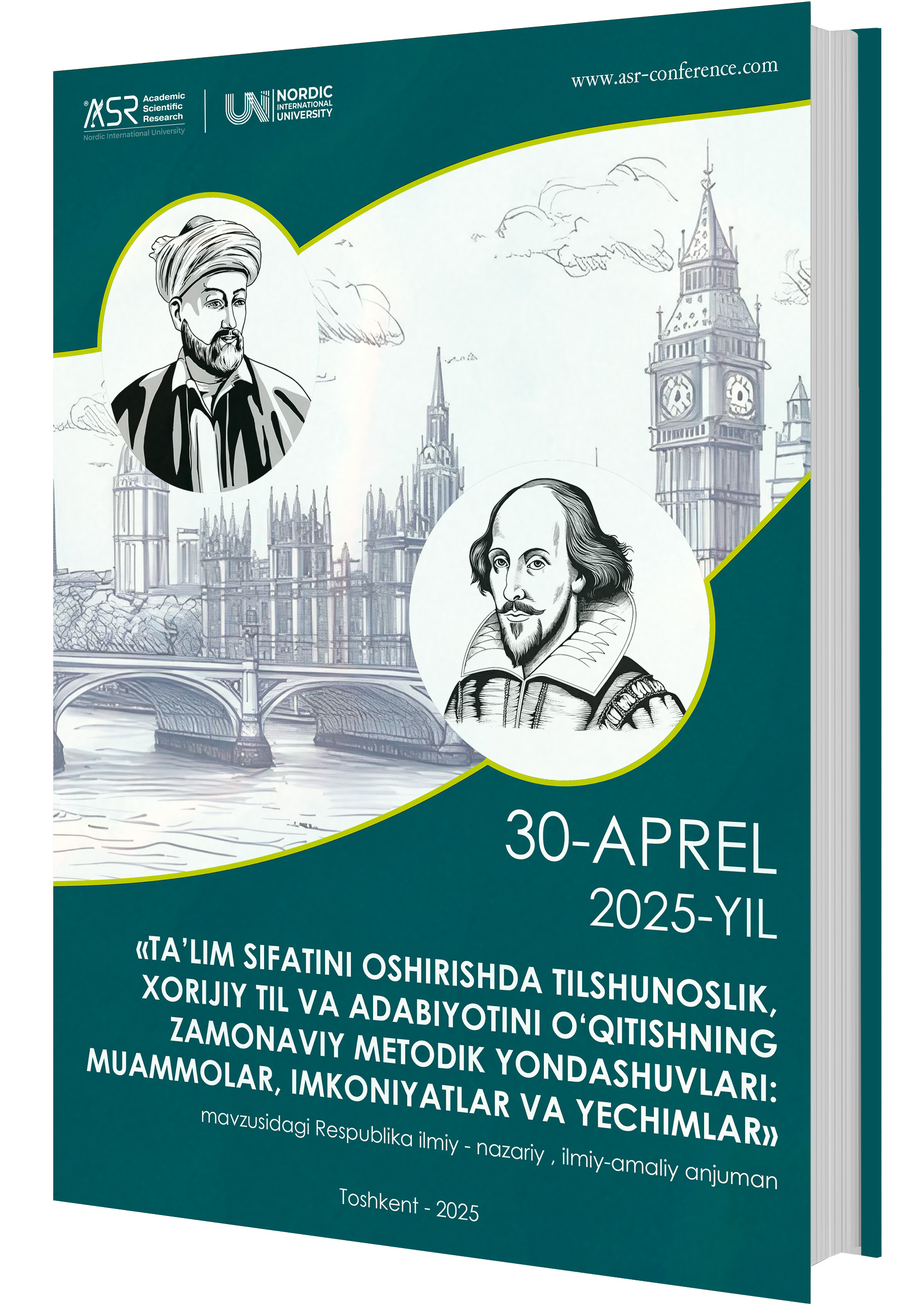SEMANTIC FEATURES OF FASHION TERMS IN UZBEK AND ENGLISH TEXTS
Аннотация
This study examines the semantic features of fashion-related terminology in Uzbek and English texts. By comparing the lexical semantics, connotations, and pragmatic functions of key fashion terms, the research identifies both similarities and differences between the two languages. A corpus consisting of fashion magazines, advertisements, and online resources was analyzed using both qualitative and quantitative methods. The results provide insights into how cultural contexts influence term usage and contribute to effective cross-cultural communication in the fashion industry.
Библиографические ссылки
Gocheva, E. (2018). Fashion Semantics in Global Communication. London: Routledge.
Karimov, A. (2019). O‘zbekiston Moda Leksikasi: Semantik Xususiyatlar va Tendensiyalar. Tashkent: Ilm-fan Noshriyoti.
Crystal, D. (2003). The Cambridge Encyclopedia of the English Language. Cambridge University Press.
Saeed, J. I. (2003). Semantics. Blackwell Publishing.
Alimov, R., & Qodirov, M. (2020). “Moda Sohasida Leksik Semantika: O‘zbekiston va Xalqaro Tajriba.” Lug‘at va Til Tadqiqotlari, 5(2), 45–62.
Lakoff, G. (1987). Women, Fire, and Dangerous Things: What Categories Reveal About the Mind. University of Chicago Press.
Fillmore, C. J. (1976). “Frames of Reference for Semantic Structure.” In E. W. Sommer (Ed.), Frame Semantics and the Nature of Language.
Saban, A. (2015). “Cultural Connotations in Fashion Terminology: A Comparative Study.” Journal of Cultural Linguistics, 12(1), 78–95.
Crystal, D., & Davy, D. (2004). “The Story of English in Global Context.” Oxford University Press.
Barthes, R. (1983). The Fashion System. University of California Press.
Загрузки
Опубликован
Выпуск
Раздел
Лицензия
Copyright (c) 2025 Sayyora Xodjayeva

Это произведение доступно по лицензии Creative Commons «Attribution-NonCommercial» («Атрибуция — Некоммерческое использование») 4.0 Всемирная.
Условия лицензии
Эта работа доступна под лицензией Creative Commons Attribution-NonCommercial 4.0 International License. Чтобы просмотреть копию этой лицензии, посетите http://creativecommons.org/licenses/by-nc/4.0/ или отправьте письмо по адресу Creative Commons, PO Box 1866, Mountain View, CA 94042, США.
По этой лицензии вы можете:
Поделиться — копируйте и распространяйте материал на любом носителе и в любом формате.
Адаптируйте — делайте ремиксы, трансформируйте и дорабатывайте материал.
Лицензиар не может отозвать эти свободы, если вы соблюдаете условия лицензии. На следующих условиях:
Атрибуция. Вы должны указать соответствующую ссылку, предоставить ссылку на лицензию и указать, были ли внесены изменения. Вы можете сделать это любым разумным способом, но не таким образом, который бы предполагал, что лицензиар одобряет вас или ваше использование.
Некоммерческое использование — вы не имеете права использовать материал в коммерческих целях.
Никаких дополнительных ограничений. Вы не имеете права применять юридические условия или технологические меры, которые юридически запрещают другим делать все, что разрешено лицензией.





